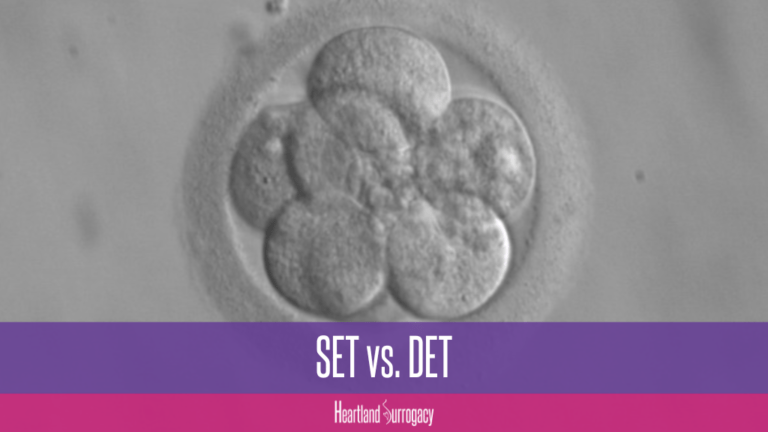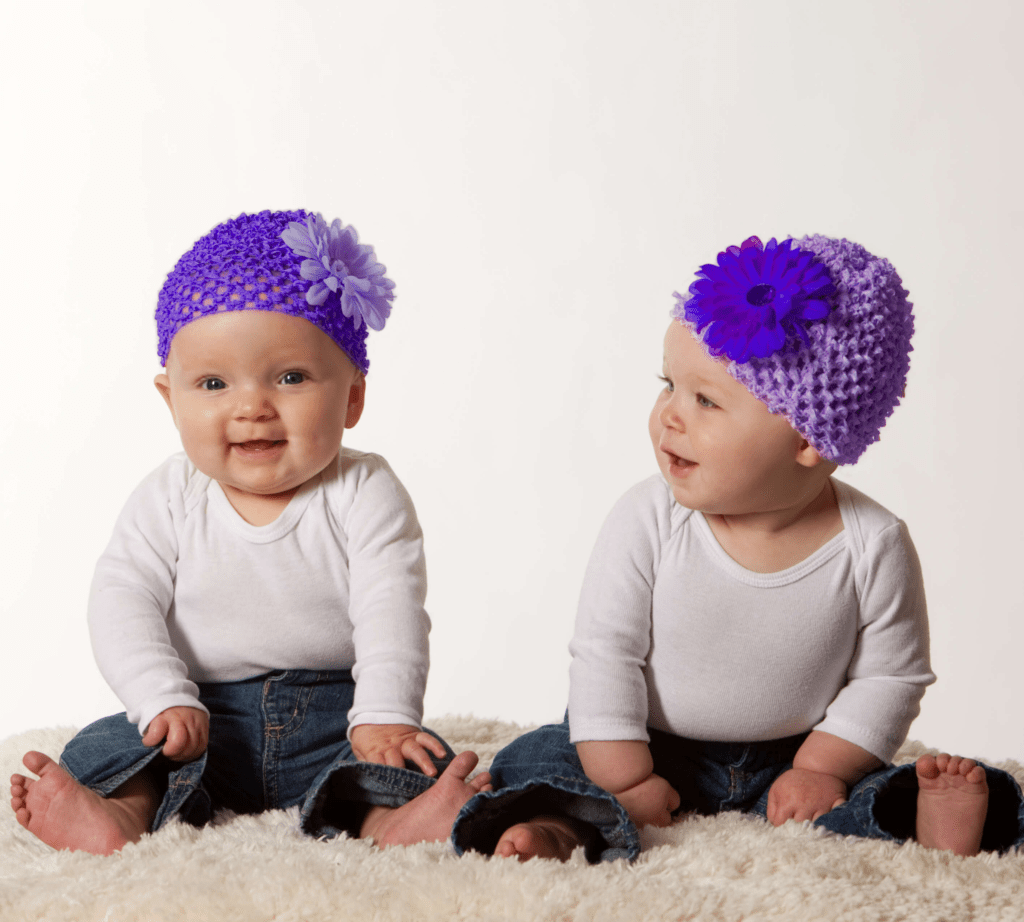Single embryo transfer vs. double embryo transfer
Many intended parents (IPs) going through in vitro fertilization (IVF) have more than one embryo available to transfer. The decision whether to transfer one or more embryos is complex. In surrogacy, gestational carriers (GCs) and IPs often make this decision prior to matching. IPs may receive input from their clinic’s reproductive endocrinologist and embryologist to help make this decision. Due to the important nature of this topic, Heartland Surrogacy considers both a surrogate’s willingness to carry multiples and the intended parents’ desire to transfer multiple embryos during the matching process.

Some IPs and GCs wish to transfer more than one embryo in hopes that it will increase their chance of pregnancy. However, recent advancements in IVF technology have led to higher success rates, regardless of the number of embryos transferred. The increase in success rates is propelled by the prominence of using blastocysts (often called “Day 5/6” embryos) as well as the increased availability and affordability of embryo screening (PGS/PGD/CCS). In fact, recent studies determined that transferring one screened embryo has similar success rates to transferring two unscreened embryos.
Additionally, embryo freezing and thawing techniques have also improved, so extra embryos may be transferred in later cycles. There is evidence from well-controlled non-randomized trials and clinical reports that, if the contribution of subsequent cryopreserved embryo transfers are included, cumulative success rates are similar for SET and DET. Because of these improvements in implantation rates, many fertility clinics now require a single embryo transfer.
Pros of SET
The primary goal of a single embryo transfer is to reduce the risk of a multiple gestation pregnancy. A single embryo transfer is the most likely scenario to grow one healthy baby at a time. (Remember, embryos can still split into identical twins during early pregnancy). Singleton pregnancies have lower risks for both the gestational carrier and the baby, including lower risks of pregnancy complications, cesarean sections, and prematurity.

Cons of SET
Many couples pursuing IVF and surrogacy have already undergone a long and emotionally exhausting fertility journey. The IPs may be fatigued by this process and want to transfer more than one embryo at a time in hopes of only having to do one surrogacy journey, resulting in twins. In addition to the emotional cost of multiple transfers, there is a financial cost. In the US, fertility treatments are often not covered by insurance. Therefore, there are additional costs for each embryo transfer in an already long and expensive journey.

Pros of DET
Embryologists may sometimes recommend a DET based on factors including the number of embryos, previous failed transfers, and the age of the person who provided the egg. For example, an embryologist may recommend a DET if utilizing Day 3 (cleavage stage) embryos, if the person who provided the eggs is over 35, or if there have been previous unsuccessful transfers.
Some IPs may prefer a DET because they want multiple children and would welcome a multiple gestation pregnancy. For example, two men may hope to have a set of twins that can each carry one of their genetic material. Some surrogates may already have experience with an uncomplicated twin pregnancy and may be comfortable with a DET and potential multiple gestation.
Cons of DET
According to the Centers for Disease Control (CDC), twins have a higher incidence of medical complications compared to singletons, including pre-term delivery (65% in twins, compared to 14% in singletons), low birth weight (57% vs. 9%) and very low birth weight (9% vs. 2%). These complications often lead to neonatal intensive care after birth, which may create extra challenges for international/out-of-town IPs. Multiples also have a higher rate of permanent, sometimes severe, disabilities, including long-term respiratory and gastrointestinal problems, vision issues, cerebral palsy, other neurological damage, and even death. Because of the potential complications, twins rarely result in the “two for one” cost some intended parents may hope for.
Whether to utilize a single or double embryo transfer should not be taken lightly. An educated decision can be made after considering the risks, desire for multiple children, financial considerations, and the expected implantation rate. IPs and GCs should both be comfortable with the decision and understand that the recommendations may change as treatment progresses.
Heartland is Here For You!
At Heartland Surrogacy, we’re dedicated to supporting you every step of the way as you embark on your surrogacy journey. Our compassionate team understands the emotional and logistical complexities involved in creating a family, and we’re here to provide expert guidance and heartfelt support throughout the entire process. Whether you’re an intended parent or a potential surrogate, our personalized approach ensures that your unique needs and dreams are at the forefront of our efforts. With Heartland Surrogacy by your side, you can navigate this transformative experience with confidence, knowing that we’re committed to helping you achieve your goals and create the family you’ve always hoped for.
